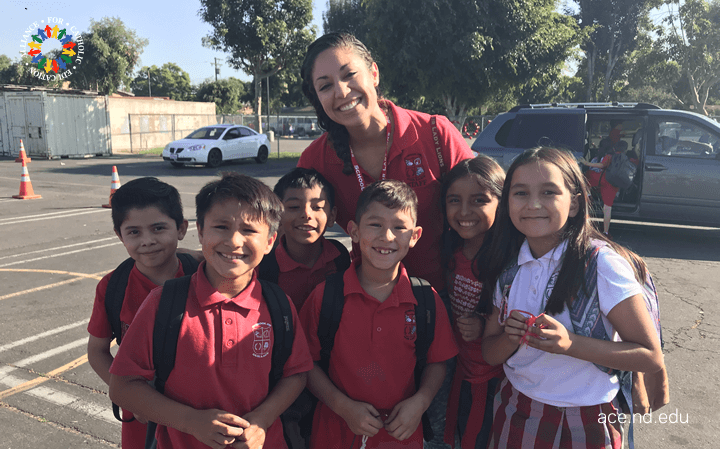It's pretty common for teachers to assure us that they are doing blended learning, only for us to quickly discover that they are really just using technology in their classroom without actually changing the way students learn. It is far less common, however, for teachers to accidentally implement blended learning without doing so intentionally – but that is exactly what happened for the star of today's post, Maggie Schmid.
Maggie graduated from the University of Notre Dame in 2016 and welcomed her first class of third-graders in Santa Ana, California, as an ACE Teaching Fellow just a few months later. Shortly before the school year began, Maggie discovered that her school was part of a 1:1 initiative that provided each of her students an iPad or Chromebook to use in class. Of course this sounded like a great resource, in theory, but Maggie had no idea how she would use these devices to help her students rather than to distract them.
She started by simply using the adaptive math program that the Diocese of Orange purchased for every student: ST Math. "That was my first glimpse of how much technology could help me and my students," Maggie explained. "I struggled a lot with pacing as a new teacher because I didn't know how to pace my lessons to meet the needs of my highest and lowest students at the same time. With ST Math, though, pacing was never an issue – students could work at their own pace, and I could step in to help them when they needed it or pull small groups of students for targeted instruction."
Then, about halfway through her first year of teaching, Maggie went to a professional development session that changed her trajectory as a teacher. In the session, the teacher presented a few of her favorite free online programs for lower elementary students, and Maggie's eyes were opened to a whole world of possibilities for her and her students. Suddenly, Maggie went from tentatively incorporating a few online programs to enthusiastically using new programs on a regular basis with her students.
"I was, and still am, constantly finding new free programs that offer opportunities for differentiation and greater inclusion in my classroom," Maggie told me. "I was never trying to 'do blended learning'–I didn't even realize I was doing it until I took the ACE blended-learning class this summer. I have just found that incorporating online programs that let students work at their own pace in a classroom model that allows me to work with small groups of students is the most practical way to meet the needs of my diverse learners."
This model of teaching and learning has not only improved Ms. Schmid's ability to meet her students' needs, though; it has also increased her students' joy in learning. "I never have to incentivize my students to work on reading or math because they actually enjoy the work they are doing," Maggie explained. "It's so fun to look around the classroom when the students are working and see them singing along to an educational video or high-fiving their neighbor because they passed a lesson.
"The best part is that every student can be successful–success is not reserved for the typical high performers. I have one student who is a very slow learner and is almost constantly frustrated by his work, but he can feel a sense of success on the computer. When I asked him if his online work was too easy or too hard, he replied, 'just right.'"
I asked Maggie what advice she would have for other teachers, and she replied simply: "If I could tell them anything, I would tell them it's worth it." There is no doubt that shifting your instructional model and exploring a huge selection of online programs requires a serious investment of time, particularly at the beginning. But Maggie encourages teachers to be proactive and seek out resources and mentors to help them learn. "Don't do it just to 'do' blended learning, because that's not a reason that's going to get you out of bed in the morning. Do it because this is the right thing to do for your students."
We are so grateful to Maggie for sharing her perspective with our Higher-Powered Learning community! You can reach Maggie at mschmid@nd.edu.
 Alliance for Catholic Education
Alliance for Catholic Education
